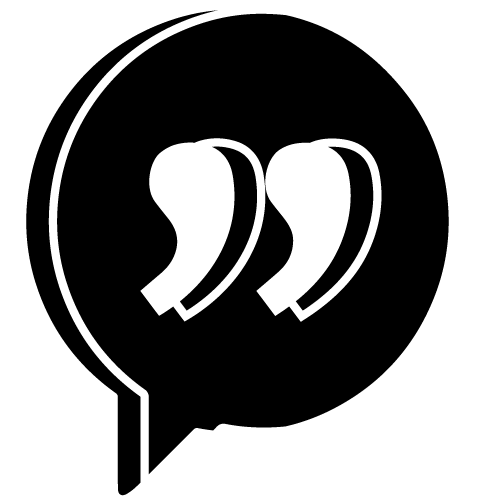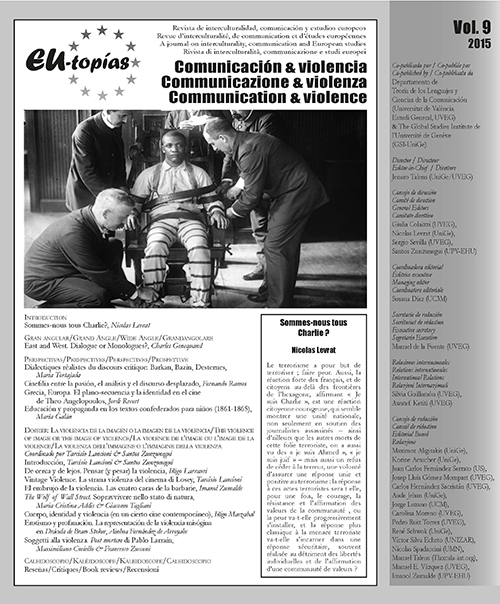Educación y propaganda en los textos confederados para niños (1861-1865)
DOI :
https://doi.org/10.7203/eutopias.0.18747Mots-clés :
Propagande, éducation, manuel scolaire, littérature pour enfants, Guerre de Sécession, Confédération, idéologie Résumé
Résumé
Les textes pensées pour enfants ont joué traditionnellement un rôle décisif dans la formation des esprits les plus jeunes, étant souvent utilisés comme renfort pour la propagande orientée vers les adultes. La Confédération, dans le processus de construction d’une nouvelle iden- tité nationale, était au courant de ce pouvoir d’influence. Le présent travail analyse quelles idées utilisées par la propagande confédéré sont apparues dans les textes adressé aux enfants, signalant quelles ont été dirigées à la formation des futures citoyens et quelles étaient destinées à agir en tant que renfort du discours de propagande confédérée; et observant quelles questions ont suivi une ligne similaire dans les deux discours, l’adressé aux enfants et l’adressé aux adultes (comme dans l’exaltation patriotique de la nation), et dans lesquelles il y a eu une certaine rupture (défense de l’esclavage).
 Téléchargements
Téléchargements
 Références
Références
Andrews, J. Cutler (1970), The South Reports the Civil War, Princeton: Princeton Universy Press.
Convention of Teachers of the Confederate states (1863), Proceedings of the Convention of Teachers of the Confederate States, Assembled at Columbia, South Carolina, April 28th, 1863, Macon: Burke, Boykin & Co., Steam Book and Job Printers.
Blackwell, Robert (1861), Original Acrostics on All the States and Presidents of the United States, and Various Other Subjects, Religious, Political, and Personal. Illustra- ted with Portratis of All the Presidents, and Engravings of Various Other Kinds [http://docsouth.unc.edu/imls/ blackwell/blackwell.html] (consulta: 21-06-2014).
Branson, Levi (1863), First Book in Composition. Applying the Principles of Grammar to the Art of Composing. Also, Giving Full Directions for Punctuation; Especially Designed for the Use of Southern School, Raleigh: Branson, Farrar & Co.
Campbell, William A. & dunn, William R. J. (1864), The Child’s First Book, Richmond: Ayres & Wade.
Chaudron, Adelaide de Vendel (1864), The Third Reader, Designed for the Use of Primary Schools, Mobile: W. G. Clark.
Crandall, Marjorie Lyle (1955), Confederate Imprints: A Check List Based Principally on the Collection of the Boston Athenaeum, Portland, Maine: The Anthoensen Press.
Davis, Jefferson (1861), Jefferson Davis’ First Inaugural Address [https://jeffersondavis.rice.edu/Content. aspx?id=88] (consulta: 15-07-2014).
— (1862), Jefferson Davis’ Second Inaugural Address [https:// jeffersondavis.rice.edu/Content.aspx?id=107] (con- sulta: 15-07-2014).
Faust, Drew Gilpin (1988), The Creation of Confederate Nationalism: Ideology and Identity in the Civil War South, Baton Rouge: Louisiana State University Press.
Harwell, Richard (1957), More Confederate Imprints: Supplement to Confederate Imprints, A Check List Based Principally on the Collection of the Boston Athenaeum, by Marjorie Lyle Crandall, Richmond: Virginia State Library.
Kelly, R. Gordon (1973), «American Children’s Literature: An Historiographical Review», American Literary Realism, 6 (2), pp. 89-107.
Kennerly, Sarah Law (1956), Confederate Juvenile Imprints: Children’s Books and Periodicals Published in the Confederate States of America 1861-1865, University of Michigan [tesis doctoral].
Knight, Edgar W. (1947), «An Early Case of Opposition in the South to Northern Textbooks», Journal of Southern History, 13, pp. 245-264.
Kopp, Laura Elizabeth (2009), Teaching the Confederacy, University of Maryland, College Park [tesis docto- ral].
Marten, James (1998), The Children’s Civil War, Chapel Hill: University of North Carolina Press.
Moore, Marinda Branson (1863), The First Dixie Reader: Designed to Follow the Dixie Primer, Raleigh: Branson, Farrar & Co.
— (1863), The Geographical Reader for the Dixie Children, Raleigh: Branson, Farrar & Co. Publishers.
Parrish, T. Michael & willinGhAm, Robert Marion Jr. (1987), Confederate Imprints. A Bibliography of Southern Publications from Secession to Surrender, Austin: Jenkins Publishing Co.
Shepperson, William G. (1862), War Songs of the South, Richmond: West & Johnston.
Smith, R. M. (1864), The Confederate First Reader: Containing Selections in Prose and Poetry, as Reading Exercises for the Younger Children in the Schools and Families of the Confederate States, Richmond: G. L. Bidgood.
Sterling, Richard & Campbell, J. D. (1862), Our Own Third Reader: For the Use of Schools and Families, Greensborough: Sterling, Campbell, and Albright.
Stewart, Rev. K. J. (1864), A Geography for Beginners, Richmond: J. W. Randoplph.
Thomas, Emory M. (2011), The Confederate Nation 1861- 1865, Nueva York: Harper Perennial.
Wiley, Calvin H. (1861), Address to the People of North Carolina (speech given at the Confederence of Teachers and Friends of Education, Raleigh, N.C.) [http://docsouth. unc.edu/imls/confteach/confteach.html] (consulta: 14-07-2014).
Téléchargements
Publiée
Comment citer
-
Résumé625
-
PDF (Español)84
Numéro
Rubrique
Licence
![]()
Tous les contenus publiés dans EU-topías. Revista de Interculturalidad, Comunicación y Estudios Europeos est sous licence Creative Commons Paternité-Pas d'Utilisation Commerciale-Partage des Conditions Initiales à l'Identique 4.0. Le texte complet de la licence peut être trouvé à http://creativecommons.org/licenses/by-nc-sa/4.0
Ils peuvent être copiés, utilisés, diffusés, transmis et affichés publiquement, à condition que:
- L'auteur et la source originale de la publication sont cités (magazine, éditeur et URL de l'œuvre).
- Ils ne sont pas utilisés à des fins commerciales.
- L'existence et les spécifications de cette licence d'utilisation sont mentionnées



